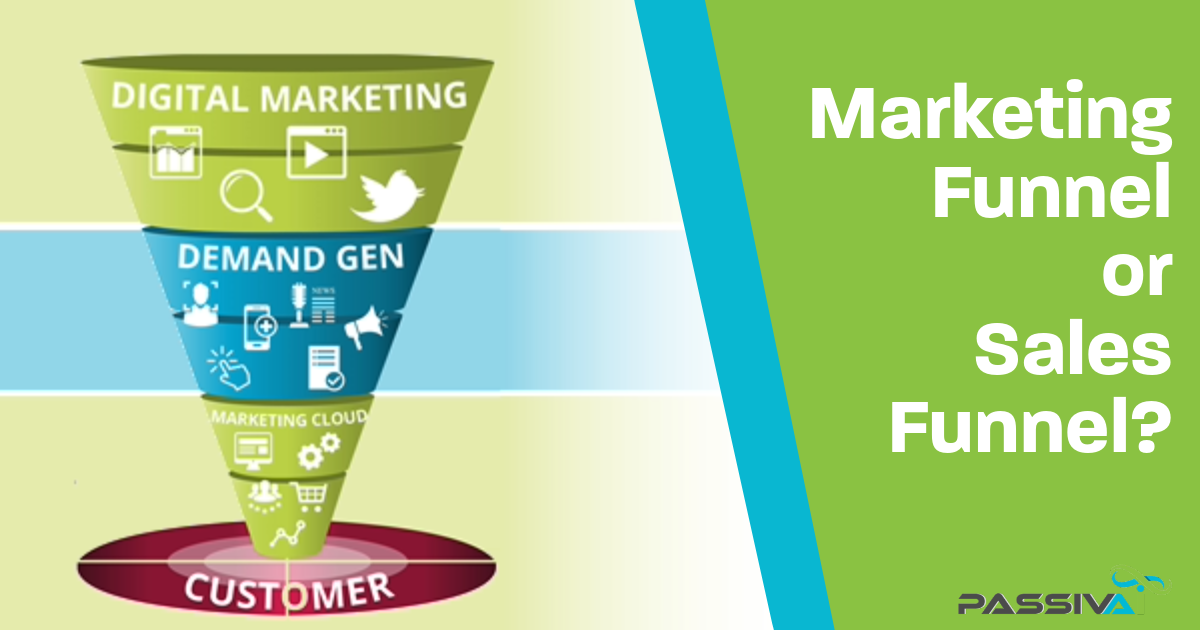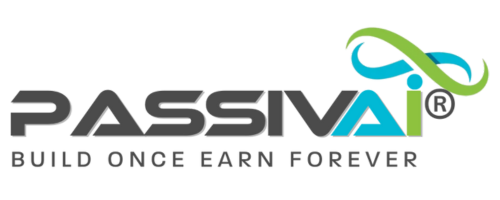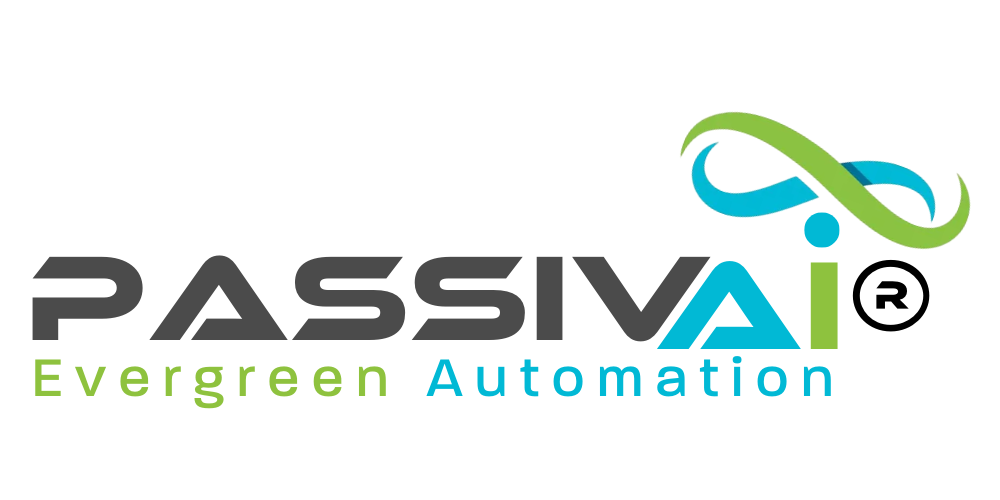What is a Funnel?
Ah, the age-old question – "What is a funnel?" Of course, I don't mean the kitchen utensil here; I mean the secret sauce that drives all digital marketing success.
The Sales & Marketing Funnel Grand Showdown
 The marketing funnel's job is to lure the audience in before the show begins. The sales funnel's job is to orchestrate every aspect of the process, from initial awareness to the thrilling climax of conversion.
The marketing funnel's job is to lure the audience in before the show begins. The sales funnel's job is to orchestrate every aspect of the process, from initial awareness to the thrilling climax of conversion.Imagine you're watching the opening act to the grand show of marketing and sales. Then, think of a funnel as the backstage director, guiding your audience step by step towards the opening scene, the show's climax, and the grand finale. You are so delighted with the performance that you buy tickets to the next one. You eagerly buy signed photos of all the actors and become a raving fan of the production company. Pretty good director, hey!
But here's the twist: there are two directors.
Both have different personalities and different end goals.
In other words, there are two main types of funnel.
Marketing Funnel Vs Sales Funnel

There's the Marketing Funnel and the Sales Funnel. They're not the same. They are in some ways, but not entirely.
Let me explain what both of them are. We must look at marketing funnels first as the actions involved come first...
What is a Marketing Funnel?
If we go back to the director analogy, imagine the marketing funnel as the director in charge of setup. This director's job is to lure the audience in before the show begins. They are an essential emcee with a vital role full of charm and charisma. They're experts at sparking an audience's initial interest, kindling curiosity and warming the crowd for the main event.
In other words, the marketing funnel is the director that produces a stage ready to capture potential customers.
What is a Marketing Funnel's Function?
This stage is set in the following ways...
- Awareness: At the broadest part of the funnel, the goal is to cast a wide net and capture the attention of as many people as possible. It's like saying, "Hey, I exist!" Here, your audience becomes aware of your brand or product through various marketing channels like social media, blogs, or ads.
- Interest: As the audience moves down the funnel, their attraction grows. They begin to explore your content, engage with your brand, and consider the value you offer. It's like a budding relationship; they're intrigued and want to learn more.
- Consideration: Now, your potential customers are in deep thought. They compare options, read reviews, and evaluate whether your product or service fits them. You could say this is the crucial stage of the marketing funnel because it is where trust is built and decisions are made.
- Intent: At this point, your audience seriously considers investing in what is on offer. They may have added items to their cart or completed a contact form. The intent is palpable, and they're on the brink of conversion.
- Conversion: Ta-da! This is the moment you've been waiting for. Your audience becomes customers. They purchase, sign up for your service, or take the desired action you've guided them towards. The marketing funnel has successfully transformed curiosity into commitment.
What is a Marketing Funnel's Purpose:
The primary purpose of a marketing funnel is to be the architect of customer relationships. How does it do that? Let's look at some of the main objectives of a marketing funnel...
- Efficiency: The marketing funnel streamlines the customer acquisition process. Instead of bombarding everyone with sales pitches, it tailors messages to each stage of the journey, making your marketing efforts more efficient and effective.
- Nurturing: It's not just about making a sale; it's about building relationships. The funnel encourages potential customers by delivering valuable content, addressing their needs, and earning their trust over time.
- Data Insights: The funnel isn't just a one-way street; it's a treasure trove of data. It lets you track how your audience moves through the stages, where they drop off, and what strategies work. This data-driven approach enables constant improvement.
- Personalisation: By understanding where your audience is in the funnel, you can personalise their experience. Tailor your messages, offers, and content to match their needs and preferences, creating a more engaging and satisfying journey.
- Profit Maximisation: Ultimately, the funnel aims to increase your bottom line. It's about converting more leads into paying customers and maximising your revenue potential.
To Sum Up: What is a Marketing Funnel?
In a world of digital noise, the marketing funnel is your guiding light. It transforms chaos into clarity, curiosity into conversions, and strangers into loyal customers. So, as you embark on your marketing adventures, remember the magical function and profound purpose of the marketing funnel, your trusted companion on the path to business success.
But hang on... what about the sales funnel?
What Is a Sales Funnel?
Enter the sales funnel. While the marketing and sales funnel play starring roles, they have slightly different scripts. Understanding this contrast is like having the secret backstage pass to mastering customer conversion.
Let's go back to the director analogy again. This director's role mirrors a new lead's journey through your sales funnel. This sales director orchestrates every aspect of the process, from initial awareness to the thrilling climax of conversion, ensuring your audience (customers) experience a blockbuster journey.
The sales funnel is the masterstroke that takes potential buyers on a thrilling journey from consideration to conversion. It's where the art of persuasion and the science of closing deals converge.
What is a Sales Funnel's Function?
Your sales funnel is the closer of deals. If your marketing funnel is the introduction to a captivating story, then the sales funnel is all about getting the right mixture of elements for a thrilling climax.
Here's how the sales funnel functions:
- Qualification: At the top of the sales funnel, the focus is identifying the most promising leads. These individuals have expressed genuine interest and are more likely to convert into paying customers. It's like sorting VIP box-seat ticket holders from the cheap seats.
- Engagement: Once qualified, leads enter the engagement stage. Here, the sales team initiates direct contact through emails, phone calls, or personalised messages. This is where relationships are built, questions are answered, and objections are addressed.
- Offer: The pivotal moment arrives when a tailored offer is presented. It could be a proposal, a product demo, or a customised solution that aligns with the prospect's needs and pain points. The offer is designed to showcase the unique value your product or service brings to the table.
- Closing: This is where the magic happens – the prospect decides to purchase. The sales team uses persuasive techniques, negotiations, and incentives to seal the deal. It's akin to the climax of a thrilling play, where suspense turns into resolution.
- Conversion: Voila! The lead becomes a customer. They've journeyed through the sales funnel, overcome objections, and consciously chose to engage with your offering.
What is a Sales Funnel's Purpose?
The primary purpose of a sales funnel is to be the revenue generator. How does it do that? Let's look at some of the main objectives of a sales funnel...
- Efficiency in Closing Deals: The sales funnel is hyper-focused on converting leads into paying customers. It's all about closing deals efficiently and effectively. No fluff, just results.
- Personalisation at Scale: While the marketing funnel tailors messages to a broader audience, the sales funnel takes personalisation to the next level. It customises interactions, offers, and negotiations to each lead's specific needs and objections.
- Relationship Strengthening: The sales funnel isn't just about transactions; it's about building trust and long-term relationships. Successful sales teams don't disappear after the sale; they continue to provide value and support.
- Revenue Maximisation: The ultimate purpose of the sales funnel is to maximise revenue. It's about turning potential into profit and ensuring every qualified lead is nurtured to conversion.
- Feedback Loop: The sales funnel provides valuable insights into what works and doesn't in your sales process. It helps refine your approach, target suitable leads, and improve conversion rates.
To Sum Up: What is a Sales Funnel?
In essence, the sales funnel is your revenue-generating engine. It transforms prospects into paying customers, harnessing the power of personalisation, persuasion and relationship-building. While the marketing funnel sets the stage, the sales funnel is the star performer that takes centre stage to drive revenue and business growth. Together, they form a balanced symphony of customer acquisition and conversion to that all-important revenue and success!
So What is a Funnel?
A funnel is the guiding force in the world of business, akin to a director in a grand theatrical production. It is a strategic framework that orchestrates the journey of potential customers, leading them through various stages – from initial awareness and engagement to the thrilling climax of conversion.
 The Show Must Go On - Marketing and sales funnels act as the master directors of a grand play on the stage of customer engagement.
The Show Must Go On - Marketing and sales funnels act as the master directors of a grand play on the stage of customer engagement.Much like experienced directors in theatre, they choreograph every step of the customer's journey, from the initial awareness and attention (marketing funnel) to the thrilling climax of conversion and post-sale support (sales funnel).
Together, they craft an unforgettable performance that captivates the audience, builds lasting relationships, and maximises business success. In this grand production, the marketing and sales funnels are the unsung heroes, ensuring that every lead is cast correctly and every customer experiences a show-stopping performance that leaves them wanting an encore.
Go Backstage: Explore More Insights on Funnel Marketing
Now that we've unravelled the captivating world of funnels in marketing and sales, you might be curious to delve even deeper.
If you're hungry for more insights and tips on optimising your funnel strategies or exploring related topics, take a stroll down the digital boulevard and explore these pages:
- Clickfunnels Vs Groove.cm: The two market leaders battle for the top place.
- The 10-Step Potted Plant Approach to Growing a Business
- The 5 Best Digital Marketing Services Powered by AI Technology
The stage is set, and the curtains are ready to rise on your next learning adventure.

